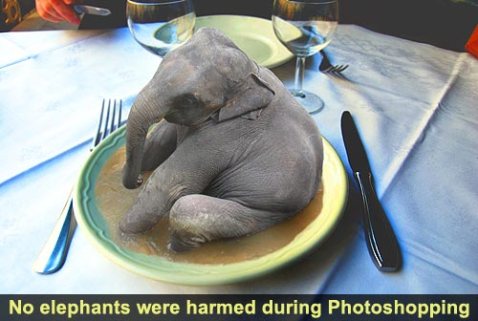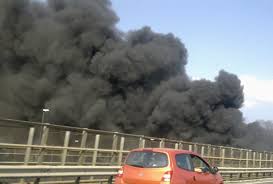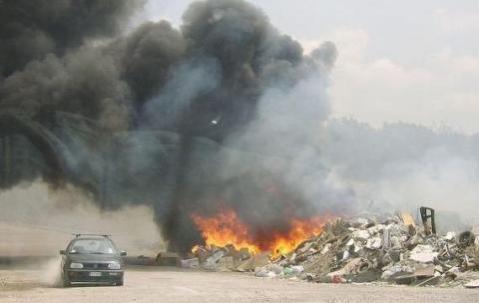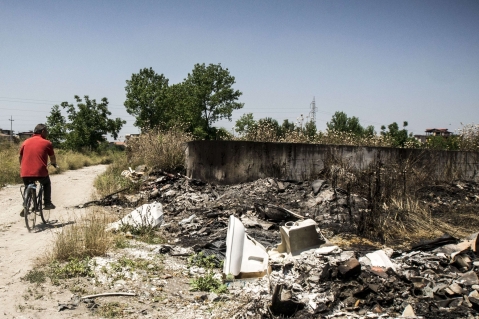New Blog
I ran out of storage room on this blog.
Please continue following at jsbj2.wordpress.com/.
Thanks!
Miscellaneous Day in downtown Naples
My friend Miranda and I decided to go to the archaeological museum and wander the streets of downtown Naples. Not much to say, here are a few pictures:
Scotland!
Scotland is voting this year (2014) for their independence. Our anthem during our vacation as well as Scotland’s future national anthem:
We had quite the debate on where to go for spring break. Once we had finally found reasonable plane fare we decided upon the land of the Scots. One week before we were set to leave Naples to Edinburgh Lufthansa, our flight provider, decided it was a good time to go on strike. All flights from Lufthansa were cancelled. All week we kept checking as they added more and more cancelled flights. Luckily, the last Lufthansa flight they cancelled was the one right before ours. We made it!
We spent the next couple days in Edinburgh exploring and finding our way around. We visited the Scottish National Gallery and the National Museum of Scotland (which houses lots of great artifacts, of particular interest to us were ancient Viking artifacts and runes, a neat printing press, and Dolly the Sheep (the first mammal cloned from an adult cell). This museum was incredibly nifty, we stayed for many hours. While in Edinburgh we loading up on Christmas gifts, ate too many fish and chips, and tried some traditional fares, such as haggis with neeps and tatties, fresh salmon, mussels, and blood pudding. In case you are wondering, haggis is great, blood pudding is not. We then took a five day bus tour through Scotland, including the Isle of Skye. We stopped about every 30 minutes to go hiking, see castles, ruins, other sites, hairy coos, waterfalls, lochs, cliffs, dinosaur tracks, a white sandy beach, various towns, etc. It was non-stop action packed and we saw way more than we would had we attempted this ourselves. All this and more helped make our Scotland trip one of our best vacations whilst living in Europe.
We made our way through the cities, towns, lowlands, highlands, lochs, glens, and fjords. The weather was generally a bit chilly (which we quite enjoy). It tended to rain at least once a day, though hardly worth getting an umbrella out for. Our day we spent on the Isle of Skye was just the opposite, it rained all day. We still did tons of hiking and site-seeing and we were soaked to the bone (totally worth it). We did rent some wellies from our hostel, so it saved our shoes from the soupy terrain.
Some highlights, outside of all the breathtaking scenery, was one spot in particular on the cliff side high on the Isle of Skye. It was incredibly windy and rainy; you had to shout to the person right next to you. This particular place was the MacDonald castle ruins from about 1600 where Donald MacDonald, the son of the MacDonald chief, and Margaret MacLeod, the sister of the rival clan’s chief, were hand fasted and lived. Donald was a crazy man not to cross. He cut out Margaret’s eye when she didn’t produce a male heir. He sent Margaret back to her home sitting backwards on a one eyed horse (which he also cut out), accompanied by a one eyed servant and a one eyed dog. This reignited the feuds between the clans, and was then known as the Wars of the One-Eyed Woman.
Another highlight was our stop at the 14th century Doune castle, where a majority of any castle scene seen in Monty Python’s Quest for the Holy Grail were filmed. Part of the entrance fee included a headset guide. Justin and I were so excited we were basically running through the castle trying to recognize places. The castle itself is nearly empty inside. On our head sets were lots of facts about the history of dukes and queens staying there and what each room was used for. We realized after all that less interesting stuff they had facts about Monty Python after them. So we had to go through the whole castle again and listen to commentary so we could fast forward it to get to the good stuff, like the history of Spamalot, elderberries, African swallows, and wooden rabbits.
We also saw the Castle Aargh! at the end of the Monty Python and the Holy Grail (Castle Stalker in Argyll). You need a boat or take a swim to get there, which we didn’t have/do, so we admired from a near distance. We saw the viaduct where Harry Potter first met the Dimentias and Hagred’s house location (the house had been picked clean and taken apart so there wasn’t really much left of it other than some stones).
We went Nessie hunting on the great Loch Ness. We did not see her. We did, however, decide to take a dip. The weather outside was about 7° C/45°F. I’m not sure what the temperature in the water was, freezing is my best guess. It was uncomfortable walking in and out because it is all rocky. If it were dirt or sand I’d have stayed longer. What was neat about it was that once we got out of the water we were warm (because the air was so much warmer than the water). We didn’t need to put our winter coats and scarves back on!
Those were the top highlights. Among other notable things we adventured include The Hermitage forest/waterfall/hiking, the Dalwhinnie distillery, Inverness field of bunnies, Culloden battlefield, Clava Cairns (5000 year old burial site/tombs/standing stones from the Bronze age), Loch Maree, Loch Torden, Loch Garonne, Eilean Donan castle, Dunvegan castle, Maddy Faine waterfall by Storr Loch, Fairy Glen, the white sands of Morr, Ben Nevis, Glen Coe, Ceilidh (pronounced like Kaylee) dancing/bar, Glen and Loch Lonan, St. Collen’s Kirk, Kilchurn castle, Rob Roye country, Argyle National Park, Stirling Castle, the William Wallace monument, and of course tons of sheep and hairy coos!
Why No One Goes to Naples
Why No One Goes to Naples
The New York Times
By BEPPE SEVERGNINI
April 11, 2014
NAPLES, Italy — Spring is here. In southern Italy, the sun is shining, the sky is blue and the weather is balmy. Orange blossom fragrances mingle with wafts of jasmine. The food is good, the wine is inexpensive, the locals are friendly and beauty is all around. But where are the tourists?
The Amalfi Coast, south of Naples, is still a magnet for wealthy Russians and romantic Americans. Yet Naples itself is a tourist wasteland, and the rest of southern Italy is largely vacationer-free.
Only 13 percent of tourists who come to Italy go to the Mezzogiorno, as the south is known. The rest head for the center and north of Italy, or other Mediterranean countries altogether. German airports sent 223 flights to Spain’s Balearic Islands in one week last summer, and only 17 to southern Italy.
Defensive Italians, particularly from the prosperous north, will tell you that no one goes to the south because there’s nothing worth seeing (they’re wrong). But the lack of tourists in places like Sicily or Calabria is indicative of a larger, nationwide failure by the country to take advantage of its most precious resources — in this case, the region’s natural and cultural beauty.
Poor marketing is one problem. The Italian Tourist Board spends an astounding 98 percent of its budget on salaries, with basically nothing left for its actual job of tourism promotion. The Italian government tried to boost interest in the southern region with its $50 million Italia.it website, but it still debuted with glitches and inaccuracies.
Or consider how little regional tourism authorities in Italy coordinate with one another. Years ago in Shanghai, I came across three separate delegations representing the same part of Sicily. They also spend wildly: Until recently the Campania regional authority had a palatial New York residence on Fifth Avenue.
Infrastructure is another issue. Italy has wasted time and money fantasizing about a bridge to Sicily. It was the pet project Silvio Berlusconi would wheel out during every election campaign. Yet high-speed rail services stop at Salerno, just beyond Naples, 300 miles to the north. There are trains in the Mezzogiorno that travel at an average speed of 8.7 miles an hour.
Last year I took a rail journey from the far northeastern city of Trieste to Trapani, on the southwestern tip of Sicily. Once I was past Rome, I found another world.
Metaponto in the Basilicata region east of Naples, has a five-track, marble-clad rail station, paid for by $25 million in European Union funds. But the last train out is an 8:21 a.m. express to Rome. If you want to go anywhere else, you have to take a bus. Farther south, the small locomotive coughing its way along the Ionian coast has to stop as ice-cream-toting teenagers cross the track on their way to the beach.
Nor are the roads any better. Upgrades on the Salerno-Reggio Calabria highway have been going on for 29 years amid a tangle of inflated costs, corruption and Mafia threats. There are stretches where construction work has had to be protected by the army.
This isn’t a regional failure; it’s a national one. Tourism ought to be to southern Italy what oil is to Norway: a blessing and a source of wealth.
And the south could certainly use it. Annual gross domestic product in the south is just over $21,000 per capita, compared with $43,000 in the center and north. Nearly two out of three young southerners have no job. Across Europe 64 percent of women work; in Campania, only 28 percent do.
What does this sorry tale say about Italy as a whole? Across the country, tourism is going from being a given to being a missed opportunity. In the 1970s, Italy was the world’s No. 1 tourist destination. Today, it has slid to fifth place behind France, America, China and Spain. As late as the early 2000s, 6 percent of the world’s tourists came here. Now only 4 percent do.
It also highlights Italy’s poor state of coordination across sectors of society. Despite still being a major destination for vacationers, Italy doesn’t even have a minister for tourism, as other European countries do. Infighting is the norm. Hotel owners argue with vacation rental agencies. Public enterprises and the private sector wage war. Neighboring regions don’t speak to one another. Do you know why flights and trains to Calabria fail to hook up with the ferries that cross the Strait of Messina? Because Calabria doesn’t want to see tourists siphoned off to Sicily.
Finally, the story of southern Italy’s tourism-fail illustrates the country’s inability to grasp how scattershot public funding means waste, not investment. Since World War II, the government has poured $550 billion into the Mezzogiorno, to no avail. By almost every measure, it is actually worse off relative to the rest of the country than it was 60 years ago.
Let’s keep our fingers crossed that the new prime minister, Matteo Renzi, can follow through on his promised reforms. The same things that would make Italy good for Italians — efficient transport, lower taxes, fairer prices, respect for the environment — would also transform southern Italy, and the rest of the country, into a paradise for vacationers.Beppe Severgnini is a columnist at Corriere della Sera and the author of “La Bella Figura: A Field Guide to the Italian Mind.”
Oplontis and Villa Regina
I took a day off work to go visit Oplontis and Villa Regina last Thursday. These are the two smaller ruin sites, after Pompeii and Herculaneum, that were destroyed in the volcanic eruption of 79 AD.
I visited Oplontis first. It was one large villa (some incredibly rich person’s show-off summer place by the sea) that is largely excavated, except for part that is still buried under the neighboring road and a gun factory. The villa is known for its many peacocks that are painted all over the place as well as mythological themes up the wazoo. The walls still have a majority of wall paintings and the floor tiling. Archaeologists have put a ton of walls and columns back in place as well. And the villa has a gigantic swimming pool.
Then I went to Villa Regina, which is quite tiny compared to Oplontis and especially Pompeii. Outside of a large room full of partially buried, gigantic wine amphorae, there is not much to those ruins. The best part of Villa Regina was the museum on the property. It is not too big, but it houses some very important artifacts found at the site as well as some from Pompeii. You can see a full loaf of bread, various grains and nuts, fishing nets, shells, pots, a plaster cast of a dog, a cast of the woman who was living at the villa with her scarf over her face (as she was suffocating to death from the volcano’s deadly fumes), glass tear jars and perfume jars, paintings, etc.
These villas are nothing compared to the grand, albeit empty Pompeii, and the small, dense, tiled, and fascinating Herculaneum. My order for my favorite ruins is happens to be directly proportional to their sizes-Pompeii, Herculaneum, Oplontis, and lastly, Villa Regina.
Sorrento and Pompeii
I took a day trip to Sorrento and Pompeii just to revisit places for the last time before I leave the area. It was pretty much just how it was the first time, so nothing really to say. Enjoy.
A weekend in Bratislava and Vienna
Justin and I spent Valentine’s and President’s Day weekend in Vienna, Austria and Bratislava, Slovakia. Our first day was spent in Bratislava. It reminded me of a very mini version of Prague, though without anything particularly spectacular. The old town is quaint with red roofs. There is a castle where at the top you have a nice view of old town and the river Danube. We stayed the night at a botel right next to the castle and old town, overlooking Bratislava’s famous UFO building on a bridge. The botel was a boat/hotel, if you didn’t pick up on that. It was a little crappy, but very convenient. I can see that Bratislava is a good party town during the summer, but during winter, it is quite empty and lackluster…which was both good and bad. We found a small bar/restaurant with some neat decorations (if you see a small guy in a cage in the pictures that’s where that was). There were a lot of random statues all over the city which was a nice surprise. And there were a lot of people walking their dogs.
Our last half of the long weekend was spent in Vienna. Go from a mildly drab but quaint Bratislava to a city full of nothing but luxurious palace style buildings as far as the eye can see-Vienna was quite the change. Vienna was really fancy and very nice to walk through. There was a magnificent cathedral in the heart of town and a number of museums, two of which we ventured. The Museum of Art History was pretty great. There was a whole room dedicated to Bruegel paintings. (While in Europe I have given myself a bit of a challenge to visit every Bruegel painting, I am a few museums shy, but this was one more to check off the list.) There was an awesome Medusa’s head painting by Peter Paul Rubens, quite a lot of nice Dürer’s, Gustav Klimt’s, and even a couple mummified crocodiles in the Egypt section. Didn’t think about it until later, but we visited a lot of places Hitler did as well…go history!
Overall a great weekend away. Happy Valentine’s Day…Happy President’s Day!
Italian Army is deploying to the “Triangle of Death”
ITALY TO DEPLOY ARMY TO COMBAT ‘TRIANGLE OF DEATH’ MAFIA DUMPS
(AFP) – Rome, Jan. 14 – The Italian government has agreed to send in the army to fight the mafia, which it blames for illegally dumping tonnes of toxic garbage in an area dubbed the “Triangle of Death”. Toxic waste has been buried in Campania province for decades, ever since the local Camorra crime syndicate decided to branch out into the lucrative waste disposal business in the 1980s. Instead of paying exorbitant sums to have it disposed of legally, companies paid mobsters a fraction of the cost to dump it in fields, wells and lakes.
Defence undersecretary Gioacchino Alfano says the army can be deployed “to deal with in the most efficient manner the phenomenon of the environment mafia in the area between Naples and Caserta”. Parliament is due to examine the decree but Mr Alfano says that “for the first time, all political forces are in agreement to offer concrete solutions to resolve a specific problem”.
The smoke-choked area north of Naples dubbed the “Triangle of Death” includes the towns of Acerra, Nola and Marigliano.
It is a grim sight – a short trip but a world away from the postcard images of the city’s bay and its famous cuisine.
Hidden out of sight down dirt tracks in the countryside, vast mounds of illegal and hazardous garbage, from broken sheets of asbestos to car tyres and containers of industrial-strength glue, lie rotting next to farmed fields. Periodically set alight, they billow black fumes towards neighbouring towns, but locals say the real killer lies in aquifers feeding tomato, cabbage and broccoli crops which are poisoned with chloroform, arsenic and heavy metals.
Environmental groups say the toxic garbage could affect one-and-a -half million people living in the Naples and Caserta provinces. According to environment protection association Legambiente, 10 million tonnes of industrial waste were burnt or buried in the zone between 1991 and 2013, all trucked in at night.
NSA Naples Public Affairs Office; “ITALY TO DEPLOY ARMY TO COMBAT ‘TRIANGLE OF DEATH’ MAFIA DUMPS”, January 15, 2014.
Photos from Google Images.
Our last New Years in Naples
Naples does the New Year right. The only day to be in Naples if you must be in Naples is the New Years. The fireworks started to consistently go off around 9pm, but were crazy from about 11:45pm to 1am.
We were planning on going off base to a friend’s place, but Justin was on call and we were not able to find a ride to return in time. So we packed a backpack with mimosa mixings and booze and headed for the highest point on base with a view-the roof patio of the TLA (hotel). There was surprisingly, or maybe not so surprisingly, no one there. We had a whole huge area to ourselves, which was nice.
Our best New Year in Naples was our first one when we were in the middle of it all on our balcony at our Gricignano house. Our second New Year’s here we were on the top of a parking garage at the airport, and this last New Year’s on a hotel roof deck. The good parts about the last two spots were that we had a view as far as the eye could see of thousands of fireworks (and we did not eventually choke on smoke forcing us back indoors). But it does not compare to being surrounded by fireworks only feet away, still the view as far as the eye can see, and having to scream at each other because it is so loud.
I apologize the video is long and not too interesting, but it’s just in case you’re interested.
Ancient Pompeiians Exotic Diet
I can only assume it looked something like this:

“…Archaeologists from the University of Cincinnati have spent the past decade excavating a row of building plots in a non-elite district of the ancient Roman city. Some of the buildings, which represent 20 store fronts, date back to the 6th century B.C.
According to a Steven Ellis, a University of Cincinnati associate professor of classics who presented his team’s findings at an Archaeological Institute of America conference in Chicago on Jan. 4, many of the ancient establishments were once restaurants. Researchers recovered mineralized and charred food contents from the buildings’ drains and toilets, and analyzed their content. What they found surprised them.
“The traditional vision of some mass of hapless lemmings — scrounging for whatever they can pinch from the side of a street, or huddled around a bowl of gruel — needs to be replaced by higher fare and standard of living, at least for the urbanites in Pompeii,” Ellis said in a statement.
Archaeologists discovered remnants of food that would have been widely available and inexpensive in ancient Italy, like grains, fruits, olives, lentils, local fish, nuts and chicken eggs. They also uncovered evidence that Pompeiians enjoyed a variety of exotic foods, some of which would have been imported from outside Italy, including sea urchins, flamingos and even the butchered leg joint of a giraffe. According to Ellis, this was the first giraffe bone ever found during an archaeological excavation of ancient Roman Italy.
“How part of the animal, butchered, came to be a kitchen scrap in a seemingly standard Pompeian restaurant not only speaks to long-distance trade in exotic and wild animals, but also something of the richness, variety and range of a non-elite diet,” Ellis said….”
Ancient Pompeii Diet Consisted Of Giraffe, Flamingo, Sea Urchin And Other ‘Exotic’ Delicacies
By Philip Ross, International Business Times. Jan. 5, 2014.








